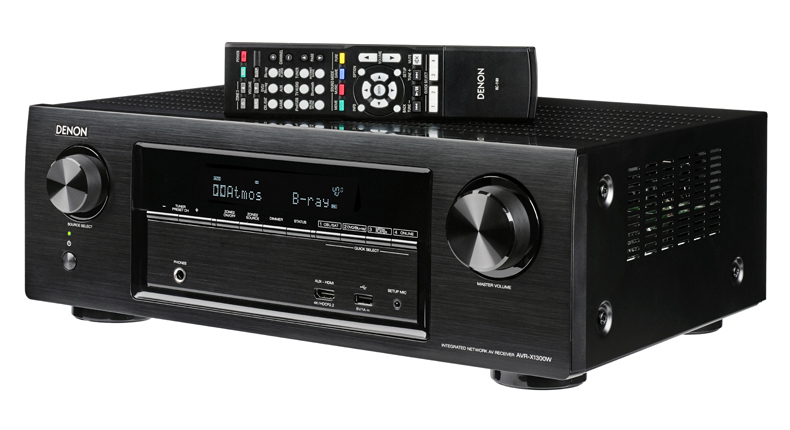What Hi-Fi? Verdict
A talented and well-equipped entry-level AV amp, albeit not necessarily your go-to starting point
Pros
- +
Brimming with features
- +
Vast file and format compatibility
- +
Dolby Atmos support
- +
Big, weighty and articulate sound
- +
Spacious, well-integrated soundfield
- +
Consistent two-channel performance
Cons
- -
Against tough competition
- -
Flaky control app
Why you can trust What Hi-Fi?
If something sounds too good to be true it probably is.
That old adage may crumble in the face of in-credit electricity bills and all-you-can-eat buffets for a fiver, but it holds some relevance when it comes to the Denon AVR-X1300W, the brand’s entry-level 7.2-channel AV amplifier.
It’s now considerably cheaper than its big brother, our Product of the Year AVR-X2300W (£500), thanks to a recent price drop from its initial £400 price tag, yet the two models seem to have a great deal in common.
MORE: Denon AVR-X2300W review
Specs
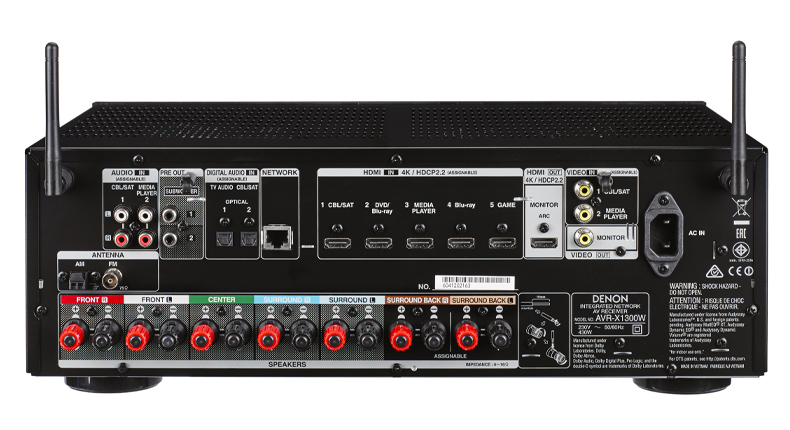
The AVR-X1300W also decodes the latest and greatest surround sound formats (Dolby True HD, DTS HD and Atmos, with DTS:X arriving soon via a software update); it can stream popular two-channel formats from DSD 5.6MHz to AIFF and 24bit/192kHz FLAC and WAV; and it’s well equipped, with wi-fi, Bluetooth, AirPlay, Spotify Connect and multiple 4K-supporting HDMI inputs.
Yes, it sheds some power in comparison – 80W per channel into 8 ohms, as opposed to the AVR-X2300W’s 95W – and forgoes a slightly cleaner interface, more advanced high-density feet, a few connections and a better remote control.
Denon says there are slight differences in the audio circuitry and power supplies, too.
Even so, on paper the AVR-X1300W appears to be good value indeed.
And it is. Got a strict limit of £300? There’s every reason to spend it here.
Only when the two machines are sat side-by-side in a sonic shoot-out do the differences, and the undoubted worth of spending more for the AVR-X2300W, become apparent.
MORE: Dolby Atmos – What is it? How can you get it?
Sound
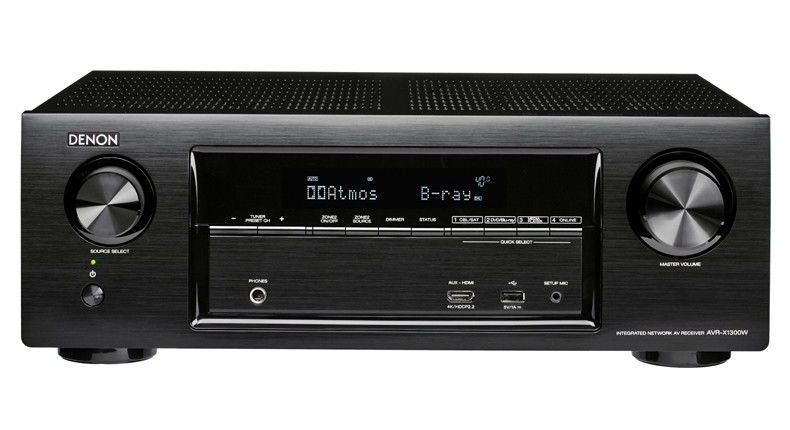
We settle down for Star Wars: The Force Awakens and there’s a genetic likeness between the two’s tonality, the 1300W’s presentation is warm, weighty and articulate – and not without the punch and authority to get your hands rubbing together as the epic symphonic orchestration scores the space opera’s opening crawl.
It surges through our speaker package with a figurative bang, the brass section enthusiastic and the theatrical strings rising as resolutely as the words on the screen.
The village-raid scene is an onslaught of crossfire and commotion, yet even at the soundtrack’s densest this Denon never sounds bewildered.
It has the space, cohesion and precision to track the trajectory of gunshots as they dart across our test room, not losing sight of them as they’re fired from one speaker and make contact with a poor soul in another.
MORE: 10 of the best film scenes to test surround sound
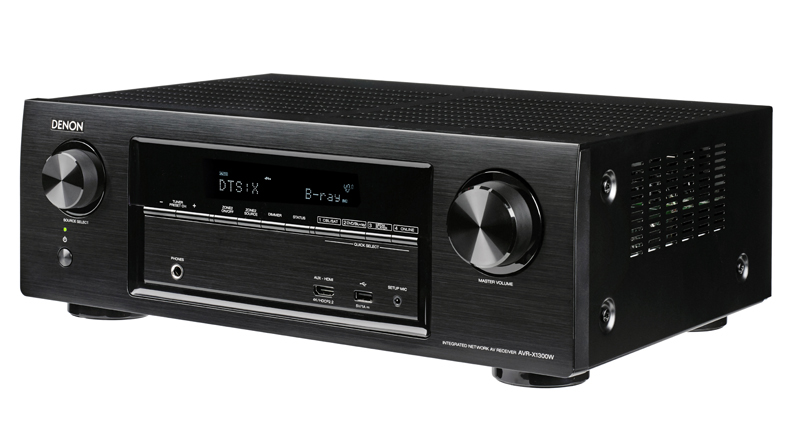
For an amplifier, as with a heavyweight boxer, there’s a balance to be struck between having the muscle to punch with power, and enough agility not to be detrimentally ponderous.
They need to afford clout to exploding ships and clunky machinery, as well as execute crisply to sound fast and exciting. The Denon nails a logical equilibrium.
It weighs in to give explosions impact and for hovering spaceships to sound big and consuming, but BB-8’s robotics and the fizz of lightsabers are still able to peep out above the hum.
Voices come through the centre channel with an intelligible mix of clarity, weight and warmth, even if it sheds a layer or two of expression and solidity compared to its sibling.
During the interrogation scene, Kylo Ren’s voice sounds suitably deep and intimidating, but the sarcasm in Poe Dameron’s voice when he’s initially confronted, and the desperation it carries during the torture, aren’t as deftly communicated.
There’s also less detail on offer higher up the frequency scale, as comparing the tinkling bells in the Main Title Theme shows.
It’s abundantly clear the sibling has a greater penchant for dynamics too; its larger sweeps make more of a meal of the intense instrumentals that rise alongside the action, and its more subtle build-up of the score provides extra suspense.
MORE: Best home cinema amplifiers 2016
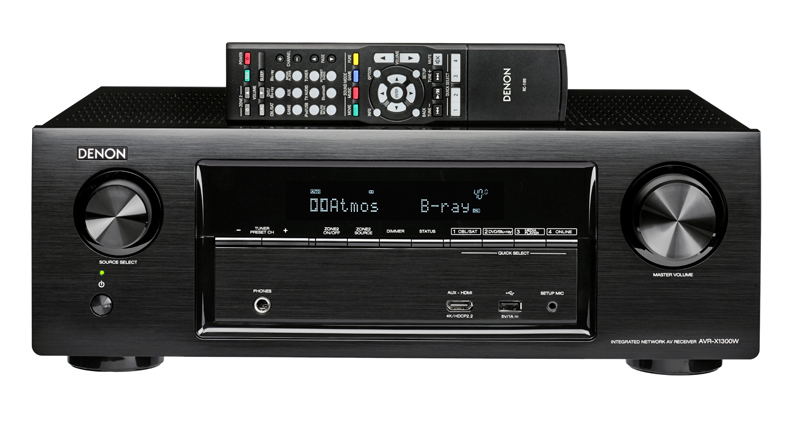
Ultimately the extra dollops of power, authority and scale of the AVR-X2300W deem it the better buy of the two.
The 15W-per-channel discrepancy in power may not seem much in numerical terms, but in practise holds the weight of a 1-0 football win, the difference between a powerful and mightily powerful sound.
With The Beatles: Eight Days A Week – The Touring Years documentary, it drives the wonderfully restored concert footage with greater impetus and jurisdiction, the group’s instrumentals coming through with more definition, and the supporting commentary with greater clarity.
Still, you can’t fault the AVR-X1300W’s innate musicality. The opening 1963 performance of She Loves You isn’t without fervour, and everything from the thrashing cymbals to melody-driving guitar lines can clearly be heard above the screaming crowd that atmospherically fills the rear channels.
The Denon’s pleasingly spacious, well-imaged soundfield does wonders for vocal separation too, so McCartney’s inflection can be clearly distinguished from Lennon’s, and from Harrison’s harmonies underneath.
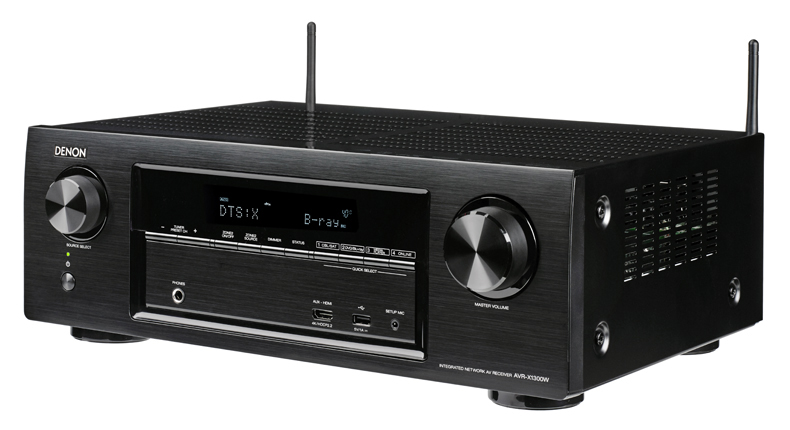
To test the Denon’s two-channel presentation, we pick up the band’s Sgt. Pepper’s Lonely Hearts Club Band CD.
It doesn’t take more than the eponymous opening track to ascertain it’s just as listenable with music as it is with movies.
Sound placement remains spot on, and good insight into the zingy guitar lines and McCartney’s stretched vocal, combined with power behind Ringo’s relentless drumming, makes for an entertaining and coherent rendition.
As it to be expected, there’s less subtlety, crispness and openness when we stream from Spotify Connect, but still, it’s snappy, tonally consistent and far from lackadaisical.
The anarchic electronica of 65daysofstatic’s Asimov is well controlled, the Denon keeping the gruelling rhythms ticking over punctually and deftly communicating the might behind the galloping drums and droning synths.
MORE: Best home cinema deals
Features
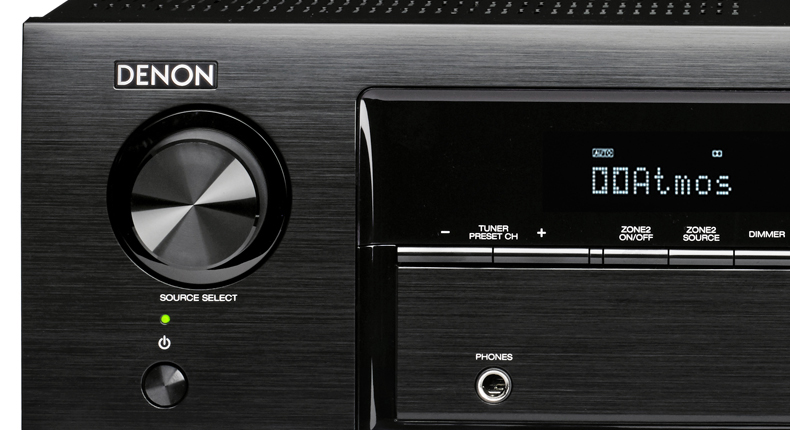
Nothing quite epitomises ‘jumping the gun’ in the AV world like throwing on your favourite film or indeed album without first calibrating an amplifier to your room and speaker set-up.
Ergo, we recommend that be your first pit stop after unboxing the AVR-X1300W.
It runs Audyssey auto set-up software to measure eight positions around your listening area, and while it requires a fair amount of audience participation, you are guided through the process easily, and it shouldn’t take much longer than the time it would take to make a well-brewed cup of tea.
Those who look fondly back at their arts and crafts school classes might also appreciate the required assembly of the cardboard tripod, for the microphone to sit atop.
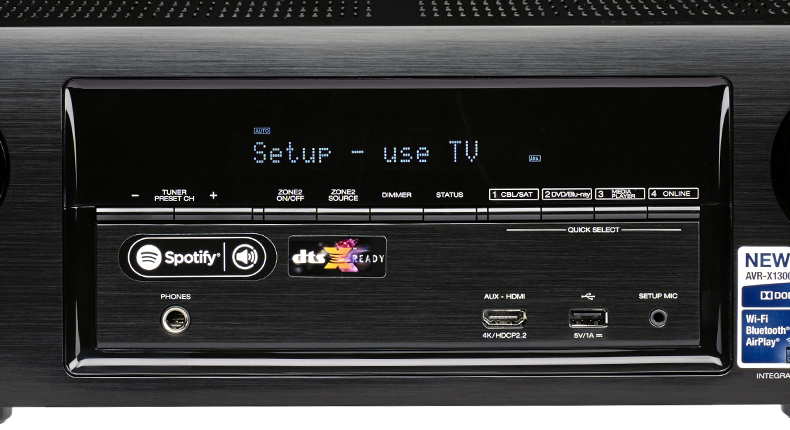
While results prove accurate in our set-up, it’s always worth glancing over the figures to see if any slight manual tweaks are required. Various Audyssey processing modes are there to experiment with, too – although are best left off in our experience.
Want to take advantage of internet radio, Spotify Connect or music streaming from a NAS drive? Then, your next stop should be establishing an internet connection.
The Denon can work wirelessly in a 5GHz waveband (or a 2.4GHz), but we’d go down the ethernet-cable route for optimum stability.
Last but not least, up to eight sources can be connected digitally through either of the Denon’s two optical or six HDMI inputs (which are all HDCP 2.2-certified to allow pass-through of all the latest display technology such as 4K and HDR).
Legacy connections cater for any retro kit you might want to hook up too and, as with the AVR-X2300W, a USB input and 6.3mm headphone output on the front panel are handy for convenience sakes.
MORE: HDR TV – What is it? How can you get it?
Design
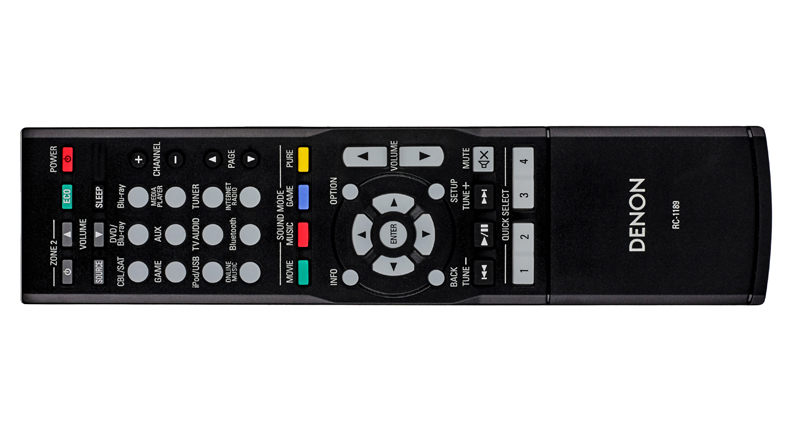
That’s not where the similarities of the two amplifier’s façades end. In fact, the AVR-X1300W looks near-on identical to its sibling – just slightly shorter, lighter and without the high-density feet.
It keeps things visually simple and functional by sporting a bright and coherent text display between two large easy-to-grab volume and input dials.
The remote is a more modest handset than the one boxed with its sibling, but the differences are mostly aesthetic; a plainer matt-plastic replaces a brushed-effect finish, and looks more cluttered with labels painted next to, instead of on, buttons.
Functionality-wise, we’ve no complaints.
Sadly, no such compliment can extend to Denon’s mobile app. It connected to the Denon instantly and sports a simple easy-to-follow interface, but it has the reliability of a UK weather forecast.
Both iOS and Android apps crash on numerous occasions in our time with it. More stability is required here please, Denon.
Verdict
Had the Denon AVR-X1300W offered similar features to its big brother and also the lion’s share of its performance, we’d be left questioning the Product of the Year status recently awarded to the AVR-X2300W. As it turns out, there’s no need.
Denon’s decision to drop the AVR-X1300W’s price from £400 to put a bigger gap between it and the AVR-X2300W was a sensible one, but nevertheless we’d still happily part with more pounds for the considerable leap in performance brought by the bigger sibling.
Mind you, if the budget simply won’t budge you could do a lot worse than this well-rounded AV amplifier.
See all our Denon reviews
What Hi-Fi?, founded in 1976, is the world's leading independent guide to buying and owning hi-fi and home entertainment products. Our comprehensive tests help you buy the very best for your money, with our advice sections giving you step-by-step information on how to get even more from your music and movies. Everything is tested by our dedicated team of in-house reviewers in our custom-built test rooms in London, Reading and Bath. Our coveted five-star rating and Awards are recognised all over the world as the ultimate seal of approval, so you can buy with absolute confidence.
